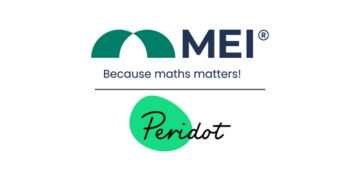With the rumours of “V Levels” first revealed by FE Week three weeks ago and now finally confirmed in the post-16 education and skills white paper, many across the sector will no doubt be signalling a V in return.
If you believe this represents evidence of concerns around defunding finally being listened to, you’re likely giving V Levels a (cautious) Churchillian V for Victory. If you’re cynical or have sector reform fatigue, it’s probably more like the V sign off the front cover of Kes.
Of course, we should reserve full judgement until the details are clearer. What we know so far is that they will form a vocational alternative to the existing routes of A Levels and T Levels, they will commence for first teaching from September 2027, and they will be equivalent in size to a single A Level. We also now know that whilst these new qualifications are developed there is no pause to the current defunding timetable. Large and very popular vocational qualifications (known as applied general qualifications – AGQs) in areas such as business, health and social care and science are due for the chop from next year and the year after.
A main concerns around the defunding approach has been the narrowing of student choice through reducing the offer to a binary alternative of A Levels or the new T Levels. It’s a legitimate concern, but the binary choice argument against the reforms never quite stacked up. There were always alternative pathways built into the Level 3 changes. In addition to A Levels and T Levels, students would have the choice to study alternative academic qualifications (AAQs) replacing some of the AQQs and designed to be combined with A Levels; or alternative stand-alone technical occupational qualifications (TOQs) that didn’t neatly align with the T Level architecture. However, these additions to the reforms were arguably poorly understood, lacked the same promotion as T Levels and were largely sidelined in some of the polemics around the risk to student choice.
When the intention to introduce V Levels was first revealed, my immediate reaction was that the government had played a blinder. Given AAQs and TOQs were flying somewhat under the radar, the response was to give them greater visibility as “the third way”. And so simple – add the V to the existing A and T. It seemed a good solution to keep the existing direction of travel largely in place but address the presentation and “brand”.
Now, I’m not so sure. Are V Levels a rebrand of AAQs and TOQs? An evolution? Or a case of back to the drawing board? If the latter, you’d pity anyone taking these replacement qualifications whilst V Levels come on stream, given the lack of currency they are likely to have in the near future.
For V Levels to succeed, we all need to be clear about their intended market, purpose and the destinations they will lead students towards. I have said previously that the barrier to T Levels’ scalability is their size and difficulty compared to many AGQs, with many providers like us adopting entry requirements more in line with A Levels. It seems this has been recognised in the proposal for V Levels, with the consultation stating that it is believed these new qualifications need to be attainable for the average student currently taking AGQs. Whether this will address current concerns about defunding, Level 3 provision gaps and potentially reduced participation in education remains to be seen.
In terms of purpose, we need to understand what makes them distinctive to A Levels and T Levels. From what we know so far, they will be broader in scope than T Levels (although smaller), focused on an employment sector rather than a specific occupational area (although designed against occupational standards) and designed to sit alongside A Levels or other V Levels. There is a danger clarity will fall between stools if we are not careful.
And many people use the terms “vocational” and “technical” interchangeably. The importance of good and clear careers information, advice and guidance will be critical.
Finally, we need to know where these qualifications will take students. Is the primary aim university, given their intention to sit with A Levels? Is it employment, given their link to practical skills and occupational standards? Or are they designed to keep options fully open and align with the government’s new ambition to support two thirds of young people into a broader range and definition of higher-level study?
A lot of questions to be answered, but at least now we have some clarity – and a more defined “third way”. As for where I sit, my ‘V’ is probably more like Winston’s. A victory of sorts for the sector. But ask me again in twelve months.











Your thoughts